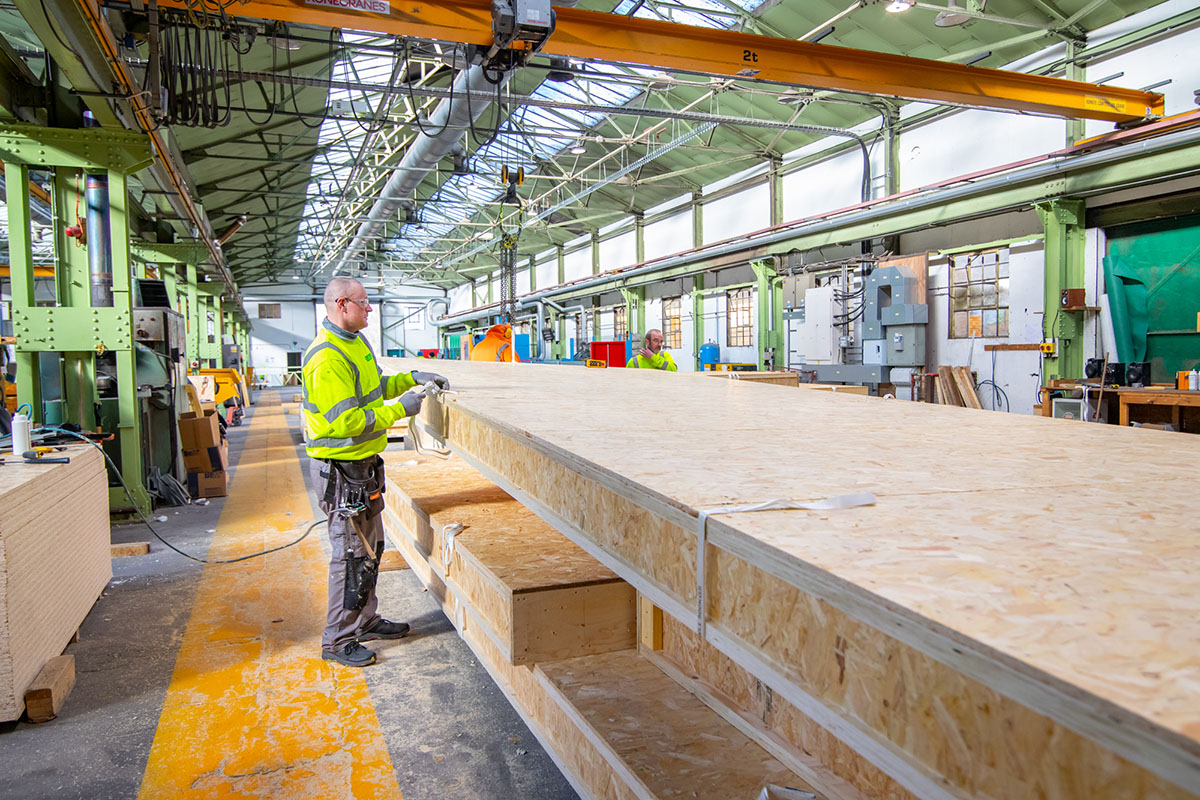
Timber frame construction is gaining momentum across the UK due to its sustainability, cost-effectiveness, and efficiency. However, despite its advantages, this method faces several challenges that need to be addressed to ensure its widespread adoption and success. We explore common hurdles in timber frame construction, including regulatory compliance, sourcing sustainable materials, and overcoming market resistance, especially in regions like England where timber frame is less prevalent. We’ll also highlight strategies and success stories that showcase how these challenges can be effectively managed.
Regulatory Compliance
Challenge: One of the significant challenges in timber frame construction is meeting stringent building regulations. Compliance with standards like the UK’s Part L, which focuses on energy efficiency, and the Passivhaus standard, which emphasizes low energy use and high comfort levels, can be daunting.
Strategy: To navigate these regulatory hurdles, it is crucial to integrate compliance requirements into the design and planning stages of the project. Deeside Timberframe, for example, employs a dedicated team of on-site project managers who ensure that all aspects of construction meet the necessary standards. Their expertise helps in creating detailed plans that align with Part L and Passivhaus criteria, ensuring that the buildings are energy-efficient and meet all regulatory requirements from the outset.
Success Story: At our Cloverhill Development in Aberdeen, Deeside Timberframe delivered 270 units over two years, all of which complied with stringent regulatory standards. By adopting a Fabric First approach, focusing on optimising the building envelope’s performance, the project achieved optimal U-Values and airtightness standards, aligning with both Part L Regulations and Passivhaus requirements. This proactive approach to compliance significantly contributed to the project’s success and set a benchmark for future developments.
Sourcing Sustainable Materials
Challenge: Sustainable sourcing of timber is another challenge in timber frame construction. With increasing demand for environmentally friendly building materials, ensuring a steady supply of sustainably sourced timber can be complex.
Strategy: To address this, construction companies need to establish strong relationships with certified suppliers who adhere to sustainable forestry practices. Deeside Timberframe, for instance, partners with suppliers who provide PEFC-certified timber. This certification ensures that the timber is sourced from sustainably managed forests, supporting ecological balance and reducing environmental impact.
Success Story: In the Saltcoats Grange development in East Lothian, Deeside Timberframe utilised sustainably sourced timber to construct 112 private homes. This commitment to using eco-friendly materials not only helped in achieving the project’s sustainability goals but also enhanced the environmental appeal of the homes to potential buyers .
Overcoming Market Resistance
Challenge: Despite its benefits, timber frame construction often faces resistance in markets where traditional brick-and-block methods are more entrenched. This is particularly evident in regions like England, where timber frame adoption lags behind.
Strategy: To overcome market resistance, education and advocacy are key. Promoting the benefits of timber frame construction through industry events, partnerships, and case studies can shift perceptions. Demonstrating the speed, cost savings, and sustainability of timber frame projects helps in convincing stakeholders of its viability.
Success Story: Deeside Timberframe’s involvement in the Travelodge Hotel project in Loughborough is a prime example of overcoming market resistance. Faced with a complex site and tight timelines, the project showcased the advantages of timber frame construction, such as rapid assembly and reduced on-site disruption. This successful execution helped in changing perceptions and highlighted timber frame as a competitive alternative to traditional construction methods .
The Future of Timber Frame Construction
Timber frame construction offers numerous advantages but also presents specific challenges that need careful navigation. By focusing on regulatory compliance, sourcing sustainable materials, and overcoming market resistance, construction companies can successfully implement timber frame methods. Deeside Timberframe’s proactive strategies and successful project executions demonstrate that these challenges can be effectively managed, paving the way for broader adoption of timber frame construction in the UK.
For those interested in exploring timber frame construction for their next project, we’re ready to offer comprehensive support from planning to on-site erection, ensuring compliance, sustainability, and efficiency every step of the way.
For more information on how timber frame can be integrated into your next project, or to discuss the benefits in more detail, please email info@deesidetimberframe.com or call 01569 767 123. Let us help you build smarter and more sustainably with timber frame.